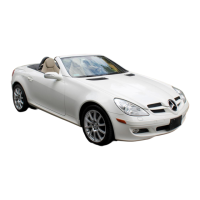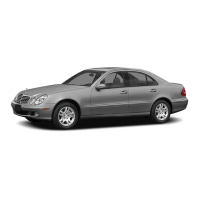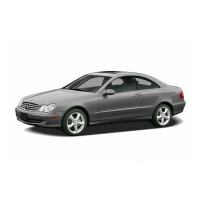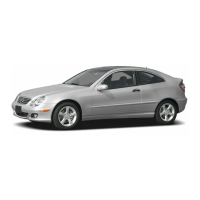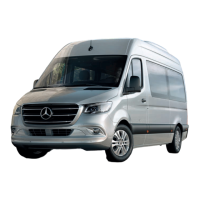If the Engine is Damaged
For towing distances up to 30 miles (about 50
km)
• Shift selector lever in “N” position.
• Do not exceed a towing speed of 30 m.p.h. (50
km/h).
For towing distances greater than 30 mile
(about 50 km)
• Remove the propeller shafts leading to the drive
axles. The vehicle can be towed without restriction.
If the Transmission is Damaged
• Remove the propeller shafts leading to the drive
axles. The vehicle can be towed without restriction.
If the Front Axle is Damaged
• Raise the front axle.
• Observe the same towing restrictions as for
engine damage.
If the Rear Axle is Damaged
• Raise the rear axle.
NOTE: Comply with local legal regulations regard-
ing towing vehicles.
SAFETY PRECAUTIONS
NOTE: The following safety precautions must be
observed when towing a vehicle.
• Secure loose and protruding parts.
• Always use a safety chain system that is inde-
pendent of the lifting and towing equipment.
• Do not allow towing equipment to contact the
disabled vehicle’s fuel tank.
• Do not allow anyone under the disabled vehicle
while it is lifted by the towing device.
• Do not allow passengers to ride in a vehicle
being towed.
• Always observe state and local laws regarding
towing regulations.
• Do not tow a vehicle in a manner that could
jeopardize the safety of the operator, pedestrians or
other motorists.
• Do not attach tow chains, T-hooks, J-hooks, or a
tow sling to a bumper, steering linkage, drive shafts
or a non-reinforced frame hole.
• Remove exhaust pipe tips that interfere with the
tow sling and crossbar
• Padding should be placed between the tow sling/
crossbar and any painted surfaces
• When placing tow hooks on the rear axle, posi-
tion them so they do not damage the brake tubing or
hoses
• Do not tow the vehicle by connecting to the front
or rear shock absorbers
• Do not tow a heavily loaded vehicle. Damage to
the vehicle may result. Use a flatbed device to trans-
port a loaded vehicle.
GROUND CLEARANCE
CAUTION: If vehicle is towed with wheels removed,
install lug nuts to retain brake drums.
A towed vehicle should be raised until lifted wheels
are a minimum 100 mm (4 in) from the ground. Be
sure there is adequate ground clearance at the oppo-
site end of the vehicle, especially when towing over
rough terrain, steep rises in the road or if the vehicle
is equipped with air dams, spoilers, and/or ground
effect panels. If necessary, remove the wheels from
the lifted end of the vehicle and lower the vehicle
closer to the ground, to increase the ground clearance
at the opposite end of the vehicle. Install lug nuts on
wheel attaching studs to retain brake drums.
RAMP ANGLE
If a vehicle with flat-bed towing equipment is used,
the approach ramp angle should not exceed 15
degrees.
TOWING WHEN KEYS ARE NOT AVAILABLE
When the vehicle is locked and keys are not avail-
able, use a flat bed hauler. A Wheel-lift or Sling-type
device can be used provided all the wheels are lifted
off the ground using tow dollies.
MAINTENANCE SCHEDULES
DESCRIPTION
The use of Special lubricant additives is not recom-
mended. The use of such additives may affect the
warranty rights. With regard to legal stipulations
concerning emissions control, please note that
engines have to be serviced and adjusted in accor-
dance with special instructions and using special
measuring equipment. Modifications to or interfer-
ence with the emissions control systems are not per-
missible.
MAINTENANCE - WITHOUT ASSYST
MAINTENANCE COMPUTER
Maintenance Intervals
• Oil service – Normal Operation every 10,000
miles or 16,000 km or 12 months.
• Maintenance service every 20,000 miles or
32,000 km.
Additional work must be carried out at yearly
intervals.
VA LUBRICATION & MAINTENANCE 0 - 7
TOWING (Continued)
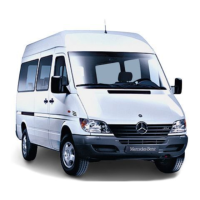
